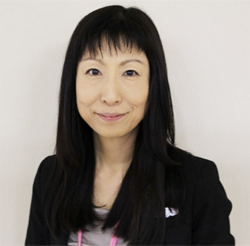
東京医科大学病院 シミュレーションセンターは、2014年4月に病院の教育研究棟(自主自学館)5階に開設されました。
東京医科大学病院は、新医師臨床研修制度の発足(2004年)と同時に、クリニカル・シミュレーション・ラボ(以後ラボ)を開設し、シミュレーション教育に着手した病院です。私は、2006年にラボの専任管理者として着任しました。私の当時の使命は、ラボの管理・運営と院内でのシミュレーション教育の普及でした。「春の研修医入職時期以外は閑古鳥の鳴いていたラボ」「シミュレータはほとんど専用のBoxに収納されていたラボをどうするか、当時の私にとっては、難しい課題でした。しかし、当院には、20代からの親しい仲間(医師や看護師)たちがたくさんいて、私を助けてくれました。私は、多くの方々に助けられ、励まされて、前へ前へとシミュレーション教育を推し進めてきたのだと思います。着任して数年後には、50㎡程度のうなぎの寝床のような狭いラボを、のべ1000人以上が利用するまでになりました。私が何もわからず独学で学びながら作成したシナリオも数十本になりました。ラボの管理・運営も日本のモデルの一つとして「東京医科大学病院 卒後臨床研修センターのラボが周知され、たくさんの視察や見学を受け入れるまでになりました。
そんな折、新たな転機が舞い込んできました。2011年4月沖縄、琉球大学医学部附属病院へ赴任です。この沖縄での私の使命は、日本一の「おきなわクリニカルシミュレーションセンター」の創設でした。「日本一のセンター作り」に猛進した沖縄の3年間は、新たな挑戦の日々でした。沖縄の皆様のシミュレーション教育にかける情熱と"「なんくるないさ~」の精神"に助けられました。そして今、「おきなわクリニカルシミュレーションセンター」は名実ともに日本一です。沖縄の仲間たちと私の努力の結晶です。
そして、また新たなステージです。2013年8月には、東京医科大学病院に新しく教育研究棟(自主自学館)が建設されました。それに伴い、旧卒後臨床研修センター棟にあったクリニカル・シミュレーション・ラボも教育研究棟に移転となりました。2014年4月には、全職員・学生を対象としたシミュレーションセンターが組織され、私は、センター長を拝命しました。新しいセンターは、チーム東京医大が安全・安心・良質な医療を提供し、皆様に信頼される病院となるための大切なシミュレーション教育の場です。全職員が気軽に集い、真摯に自らのスキルを研鑽できるような教育環境(シナリオ、シミュレータ・指導者養成を含む)整えていきたいと思います。そして、東京医大での試みを広く院外へ発信し、日本や世界のシミュレーション教育の発展の一助を担えればと考えています。
阿部 幸恵
PREFACE BY THE DIRECTOR
Welcome to the website of Simulation Center, Tokyo Medical University Hospital (SCTMUH), which was established on the fifth floor of Tokyo Medical University Education and Research Building at the hospital in April 2014.
TMUH opened the clinical simulation laboratory (Laboratory) to set out simulation-based education simultaneously with the implementation of the clinical training system for residents in 2004. I assumed the post of laboratory manager in 2009 to manage and administer Laboratory and to promulgate simulation-based education at our hospital. In those days, I faced with the issues difficult to address: "How to manage Laboratory that presented a complete lack of exuberance except for springtime when residents entered medical departments and where simulators were almost always housed in their dedicated boxes." Since my twenties, however, I had a number of close friends (physicians and nurses) who were working at TMUH; they helped me so much. I propelled simulation-based education with support and encouragement from many persons. Several years after my assumption of the post, a total number of more than 1,000 residents, paramedical staff (nurses, technicians, and pharmacists), and medical students, and used Laboratory that resembled a long narrow house and had limited floor space of approximately 50 m2. To date, I have prepared dozens of scenarios for simulation-based education by myself from scratch.
"Laboratory of Postgraduate Clinical Training Center, Tokyo Medical University Hospital" became well known among the healthcare professional as one of the Japanese models to manage and administer a laboratory for simulation-based education. In consequence, we welcomed a great number of observers and visitors.
It was just at that time when I received in April 2011 an offer to become associate professor at Hospital, the University of the Ryukyus. The mission assigned to me in Okinawa was to set up "Okinawa Clinical Simulation Center (OCSC/Chura-Sim)" as the best facility in Japan. The 3-year stay of mine in Okinawa—during which I pressed onward to fulfill the mission—represented successive days of new challenges. I was truly supported by ardor for simulation-based education that the people of Okinawa have and by their spirit of "Nankurunaisaa—Do your best and leave the rest to Providence." Currently, "OCSC/Chura-Sim" is Japan's best facility for simulation-based education both in name and in reality. OCSC/Chura-Sim represents the fruits of efforts that my peers in Okinawa and I have made.
And now, we entered a new stage. In August 2013, a new building for Tokyo Medical University Education and Research Building was constructed at TMUH. Along with this change, Laboratory also moved to the building. In April 2014, Simulation Center subject to all staff members and students was organized, and I was nominated as center director. SCTMUH is the place of important simulation-based education in order that TMUH becomes a hospital that provides our patients with safe, secure, and good-quality medical care and that is credible for our patients. I am willing to arrange education environments (including scenarios, simulators, and leader training) where all staff members can gather airily and can upgrade their skills with sincerity. And moreover, I desire to extensively signal our attempts at SCTMUH to out-of-hospital professionals in Japan who are engaged in the education of physicians, nurses, pharmacists, and technicians, as well as of pre- and postgraduate students in medical and paramedical sciences. Furthermore, I wish to be contributory to the further development of simulation-based education in Japan and world.
Yukie Abe, PhD
Director, Simulation Center, Tokyo Medical University Hospital



